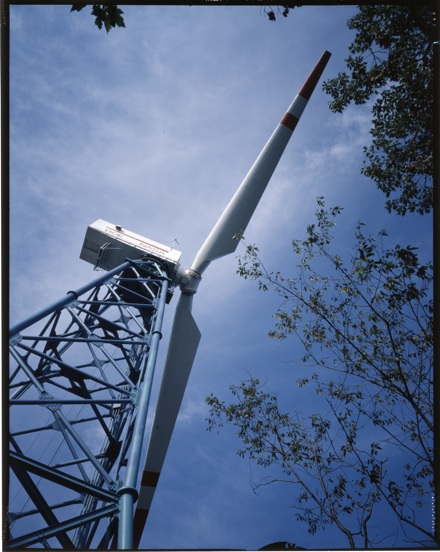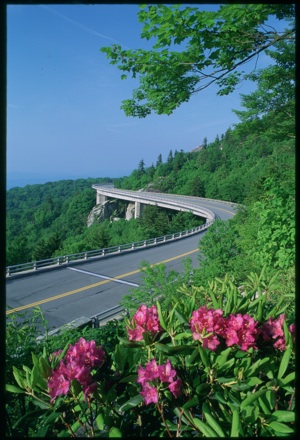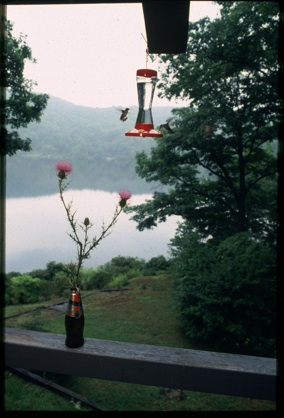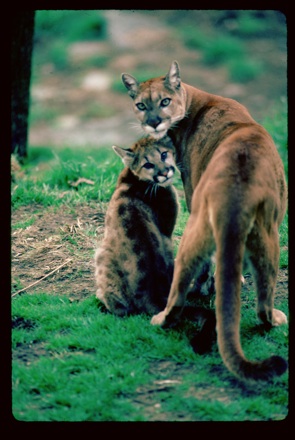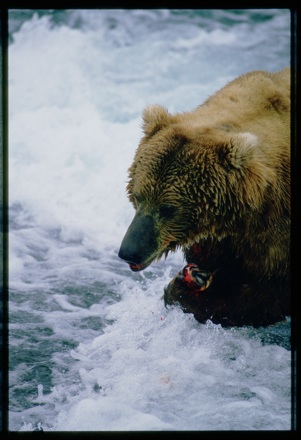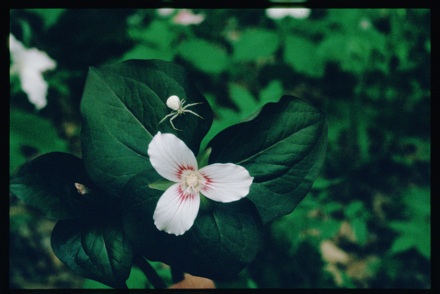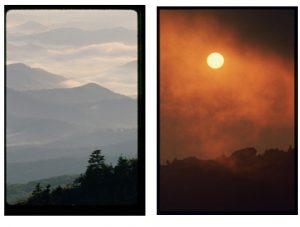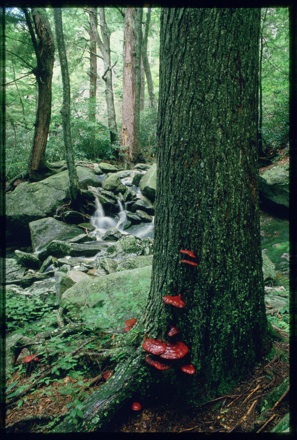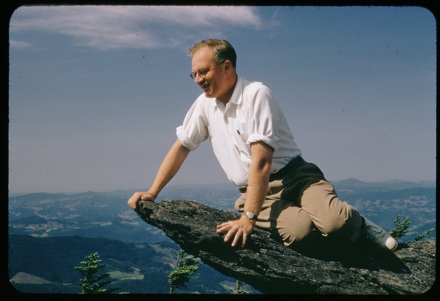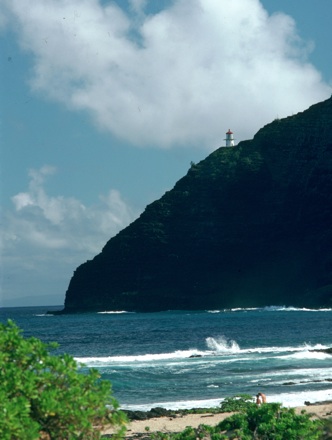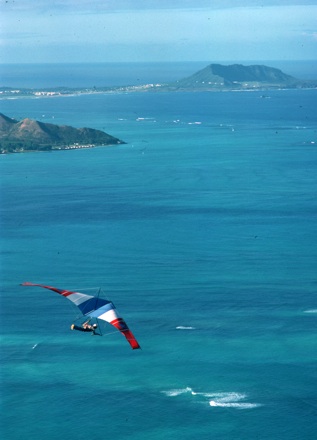You may have heard the news this morning about Grandfather Mountain State Park being closed to visitors indefinitely due to dangers caused by recent accumulations of snow, ice, and fallen trees/limbs. I experienced some of those weather adventures first-hand over the holidays in Boone, where a Christmas Eve ice storm caused extensive treachery and knocked out power to about 21,000 (it was out at my parents’ house for five days).
We wish all the best to Grandfather staff in getting the park up and running again. It sounds like they’ve all really banded together in response to these “weather challenges.” I wonder how many times, and for how long, Grandfather has had to close due to weather in the past? Speaking for myself, I have no interest in traversing the Mile High Swinging Bridge in conditions like those shown below. Brrr.
UPDATE 1/8/09: To clarify: only Grandfather Mountain State Park is closed indefinitely; the Grandfather Mountain attraction (the Mile High Swinging Bridge, animal habitats etc.) has not made the to close indefinitely. Whether the travel attraction will be open will be a day-to-day decision. For the time being, visitors should call (828) 733-2013 before making plans to travel to Grandfather.
Category: Nature
The Greens of Summer?
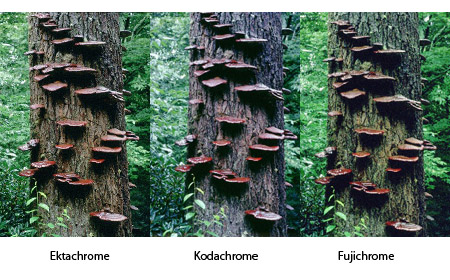 Maybe only photographers would think of this question, but if Paul Simon’s verdant lyric about Kodachrome giving us “the greens of summer” was true, then why, oh why, was Fujichrome invented? At the risk oversimplification, let’s take a look at that question. After all, in his own way, Hugh Morton did!
Maybe only photographers would think of this question, but if Paul Simon’s verdant lyric about Kodachrome giving us “the greens of summer” was true, then why, oh why, was Fujichrome invented? At the risk oversimplification, let’s take a look at that question. After all, in his own way, Hugh Morton did!
The demise of Kodak’s Kodachrome film has made the media rounds recently, and soon after the announcement I thought of writing a post about it (because Morton first used Kodachrome in the early 1950s).
Then, we rediscovered a set of 35mm slides that Morton made where he photographed several subjects with three different films, including Kodachrome. Two of those scenes are represented here as side-by-side scans. Morton’s approach was likely loading three cameras with three different films, setting up a tripod, then swapping out the cameras to make three separate exposures. He picked several scenes until he completed the three rolls of film, then processed all three rolls and compared the results, scene by scene.
To keep this from turning into a complicated photography lesson, let’s just note that manufacturers make different films with different “extended sensitivities.” That means that one film may be more sensitive to reds and yellows, for example, and another film may be more sensitive to greens and blues. This is the case between Kodachrome and Fujichrome, and Kodachrome and Ektachrome. Can you see the differences between the films in the two examples?
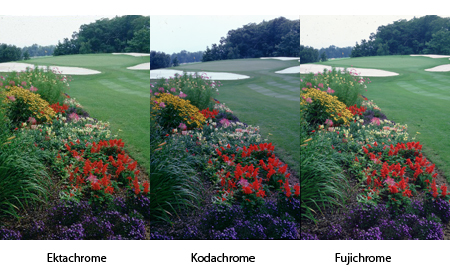
When the news of Kodachrome’s death first came out, I had my natural kicked-in-the-gut reaction I get when another hallmark of film photography comes to its fateful end. A friend and I were ruefully exchanging emails discussing Kodachrome’s death blow, and I asked, “When is the last time you shot Kodachrome?” For both of us, the answer was quite a long time ago—so long ago that neither of us could remember precisely. In fact, digital photography has meant that I haven’t shot any type of film in about five years.
One of the standout benefits of digital photography over film photography is its ability to compensate for different types of lighting or adjust the rendering of colors in a particular scene from exposure to exposure, rather than from roll to roll. Depending on your camera and/or imaging software, you can make one exposure, then walk to your computer and easily create variations from that one image that would look similar to all three of Morton’s film examples—and more. This is one more reason that digital photograhy is supplanting film photography, and a contributing factor to the end of Kodachrome’s fabled history.
Walter Cronkite, 1916-2009
 Consider this just a brief View to Hugh tribute to legendary newsman Walter Cronkite, who was laid to rest this week. Blog commenters have noted Cronkite’s primary connection to Hugh Morton: he lent his authoritative voice and reputation as narrator for Morton’s 1995 PBS documentary, “The Search for Clean Air.” As commenter and Morton collection volunteer Jack Hilliard already recounted:
Consider this just a brief View to Hugh tribute to legendary newsman Walter Cronkite, who was laid to rest this week. Blog commenters have noted Cronkite’s primary connection to Hugh Morton: he lent his authoritative voice and reputation as narrator for Morton’s 1995 PBS documentary, “The Search for Clean Air.” As commenter and Morton collection volunteer Jack Hilliard already recounted:
I recall Hugh telling the story of how Cronkite was selected. Morton said he had originally wanted his long-time friend Charles Kuralt for the program, but since the program was scheduled for PBS, Kuralt’s CBS contract would not permit him appearing on a competing network. So when Morton told Cronkite this story, Cronkite said, in his unique deep voice, ”Well, you got me.”
Julia Morton described Cronkite as “lightning in a jar.” We’re lucky to have had him for so many years.
"Windmill City"
“Today’s quiz: what had 2000 kilowatts, created devotees called ‘wooshies’, was the largest of its kind in the world, and didn’t work?
Answer: the U.S. Department of Energy wind-powered electric generator constructed on Howard’s Knob in October, 1978.”
–from the Mountain Times
Add this to the canon of “World’s Largest” in North Carolina (at least for a time): Boone’s famous experiment in wind power, dedicated thirty years ago this week (on July 12, 1979). As a Boone native (albeit a young one at that point), I certainly remember the windmill, but wasn’t aware of the full background of the project, or of the “cult” that formed around it — a Mountain Times feature, “The 20th Century: High Country History,” provides the relevant details, and Blue Ridge blog presents additional photos and remembrances.
The windmill surely created a buzz in Boone for a brief time — perhaps a bit too much buzz, as reported by Time magazine. Concerns over the windmill’s noise and ineffectiveness (plus the Reagan administration’s eventual pulling of funding for alternative energy research) ultimately doomed the project, and the windmill was taken down in 1983. I’m a little unclear on what, if any, role the Mountain Ridge Protection Act of 1983 (aka the “Ridge Law,” an effort in which Hugh Morton was heavily involved) played in all of this, other than that it exempted windmills from its ban on tall structures along the ridgeline. Can anyone fill in some of those details?
Meanwhile, NC windmills are back in the news today, as the General Assembly debates a possible windmill ban in the mountains — a ban it appears the majority of the public opposes. The NC Wind Energy website provides a wealth of information on the issue. I wonder what Morton’s position would have been?
A Magician's Secrets Revealed!
Note from Elizabeth: Last Friday was Amber’s last day at work on the Morton project. We’d like to thank her immensely for her dogged, patient, and insanely organized work sorting through the slides, and her charming blog posts. We wish her all the best with the rest of her education!
I’ve learned a lot over the last ten months working on this collection. I’ve learned about archival procedure, making many mistakes along the way (the method for organizing the slides changed probably four or five times before I found one that worked). I have found homes for hundreds of “orphan” slides, and processed more than 72,000 slides in total. I’ve also been able to travel to amazing places: Grandfather Mountain, the Fern Grottoes of Hawaii, the McNeil River in Alaska, Galilee at Sunrise, Puerto Rican beaches, and Milford Sound in New Zealand.
I’ve probably learned the most, though, about photography. Hugh Morton was an artist, crafting amazing pictures out of everyday objects. On my two visits to Grandfather Mountain, everyone shared with me tips and tricks Hugh had taught them for taking great pictures. Now, I don’t feel I am betraying any of these secrets, because Hugh took all of the following pictures to document his process.
When I saw the Linn Cove Viaduct, I thought it was a pretty scene. But it lacked something that Hugh was able to capture. (Elizabeth touched on this in a previous post about her visit to the Mountain). I heard from two different people at Grandfather how Hugh would have helpers bring potted plants or hold branches of fall leaves to frame that perfect shot. Below, we can see how he positioned a rhododendron stem just out of frame to create the resulting beautiful picture above.
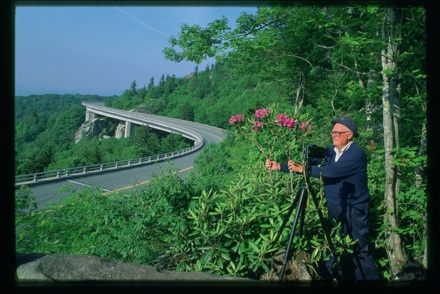
I also found slides of how he captured his amazing hummingbird pictures. I always wondered how he was in the right place at the right moment to capture that hummingbird going to that flower. Turns out it wasn’t always serendipity! The shot below shows how he set everything up on his deck at home. He would lure the hummingbirds in with a feeder, then add the bottle holding the flower. The feeder would be removed, leaving only the thistle blossom. (His camera was inside pointed out the sliding glass doors so that he wouldn’t scare the little darlings away). He could then snap as many shots as possible without having to wait all day for the right moment.
Some of my favorite shots of the bears were from when they had climbed to the top of the rock in their habitat or on a cliff by the Swinging Bridge. I thought they had done that on their own, maybe to enjoy the majestic view. Nope. Hugh would have a helper lay a trail of peanut butter up the rock for the bear to follow. Often, there would be someone just out of sight luring the bear with more treats. If you look at those pictures now, you can see that the bears are usually peering over the ledge at something.
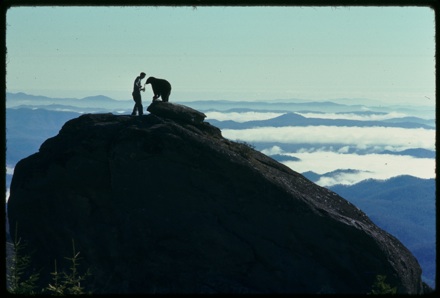
On my last trip to the Mountain, I had to laugh when I saw a Morton postcard showing a beautiful red fox running through the snow. It was faked! I’ve seen pictures of that same fox, in that same pose, in many different settings — there’s even one of it chasing a taxidermied rabbit! And Julia Morton also shared with us that Hugh carried around moose antlers in Alaska to add scenic perspective.
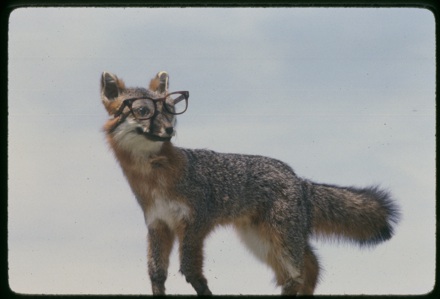
So, to be a scenic photographer of Hugh’s caliber, I need helpers to stage the scene with potted plants and tree branches. I need some sort of treat to entice the models in my pictures (whether man or beast). And I need a stuffed fox. Oh, and some moose antlers.
I’m going to need a bigger camera bag.
Mother's Day Montage
When we were little, Mom was always there with a cuddle, piece of advice, or milk and cookies. Sometimes Mom was more annoying and embarrassing than helpful. She was always trying to get that stray hair back in place or the smudges off our cheeks.
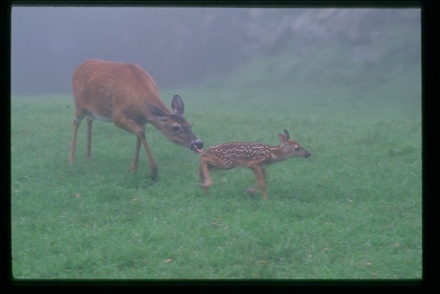
Mom taught us manners and how to be polite. Little things like chewing with your mouth closed and sharing with your brother. And even if we didn’t then, we do chew with our mouths closed now.
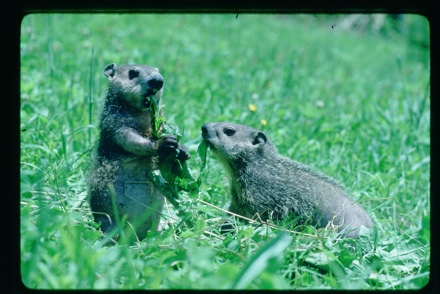
Mom taught us to be inquisitive explorers. Everything was a new toy to play with. We would take things apart to find out exactly how they worked. Sometimes we got in trouble because we couldn’t put them back together or played with stuff we weren’t supposed to. But, Mom still loved us.
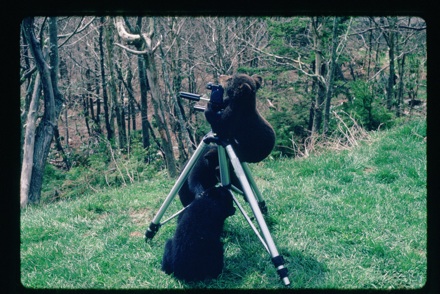
Bath time was always an adventure! It was usually a fight to get us in the tub. There was always something better to do, and our dirt was a symbol of our adventures. But once we were in, it was sometimes a struggle to get us out. Mom probably got cleaner than we did.
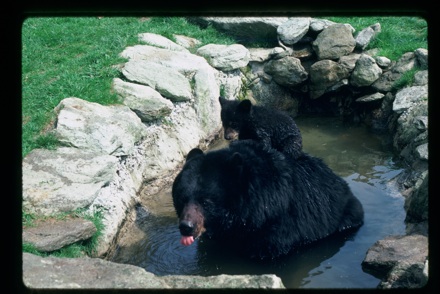
We can look back now and laugh at those stressful events. Like the time we were trying to get that family portrait. Mom kept yelling at us because we were making funny faces and playing rather than looking our best. There was never a picture that caught all of our good sides.
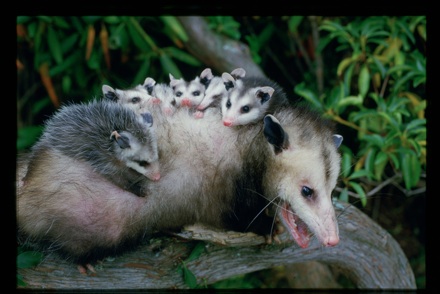
We’ve been through a lot and come out stronger than before. Nothing could come between us, even those awkward teenage years with crazy hairstyles and weird fashions. Some of those looks only a mother could love.
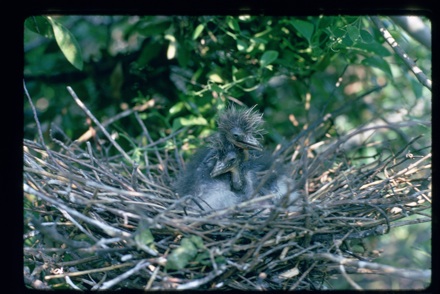
Mom has always been there through everything: the good, bad, sad, and disgusting. So thank you, Mom, for all that you do. You are the most important figure in our world, and we love you more than anything else.
The Wilds of Alaska
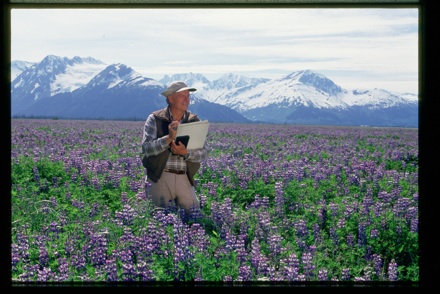
Back when I was working on the Morton slides from 1975, I sorted over 350 he took on a trip to Alaska. This was the most daunting and stressful sets of slides I have yet to organize — it appeared that they were thrown into the air and then put back into the boxes however they were picked up. I had all those slides spread out on a big light table for over a week, and there are still quite a few 1975 Alaska “orphans.”
There were some nice scenic shots of Denali and glaciers, but mostly what I remember are endless miles of pipeline (related to Williams Brothers operations, led by Morton’s good friend John Williams, pictured below).
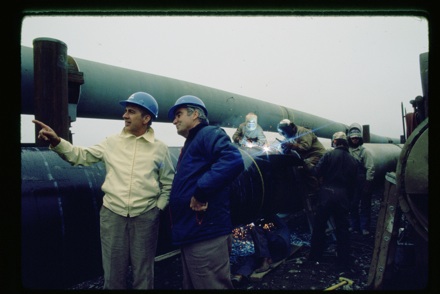
Recently, I came to a batch slides from October 1986 and July 1987 labeled Alaska, and I immediately got a headache. Memories of the pipeline made me think of quitting. It didn’t help when I tried to determine if Morton had photographed caribou or reindeer (for those of you who don’t know, they are the same thing).
Luckily, most of this batch has been better organized and labeled. They appear to be pictures from a trip Hugh took with wildlife artist Richard Evans Younger (top photo), the subject of a series of Morton films. We’re not certain who the cameraman is (see picture below), any ideas? There are film reels from the trip downstairs in storage, still to be cataloged; some of these are labeled “McNeil River Bears” and “Wildlife Artist: Younger Alaska.”
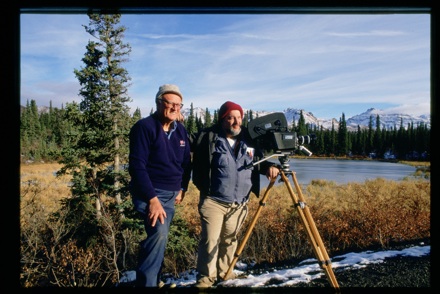
I think Morton must have gotten a bit spoiled by his ability to cuddle and wrestle the bears at Grandfather Mountain. I don’t think the bears in the wilds of Alaska are going to react the same as Mildred, Jane, or Punkin. But this didn’t seem to stop him from getting some amazing pictures of grizzlies at McNeil Falls.
McNeil River State Game Refuge and Sanctuary becomes quite populated in July and August–with bears, not tourists. Every year these bears migrate to the falls to stuff themselves with dog salmon. There are no roads to the sanctuary and visitors must apply months in advance for a chance in the lottery. Only about 250 people get to see this spectacle each year, with a limit of ten at a time. According to the Alaska Department of Fish and Game, up to 72 bears have been seen here at one time. I count 14 in the picture below!
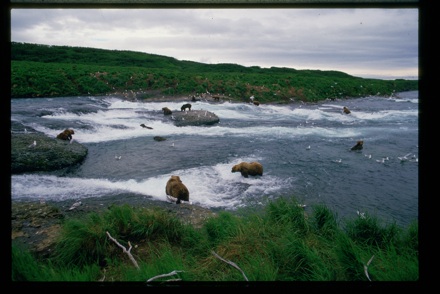
Morton was a well-traveled man. I’ve shared with you the splendors of Hawaii and Alaska. Maybe before my assistanship is finished I’ll show you Arizona, California, or Florida. Or perhaps China, Japan, the Holy Land, New Zealand and Australia, Italy, or Austria? Let me know where you would like to travel next. Cozumel is beautiful this time of year.
A Snapshot, or Art?
This semester I decided to take a Digital Photography class, both for my own enjoyment and to help me better understand Hugh Morton’s photos. The class has been very beneficial in teaching me about aperture, shutter speed, and film sensitivity. I’m now able to look at a Morton picture and say “Oh, that’s how he did that!” (Well, sometimes). For example, the three pictures below show the same full moon rising over the same mountain at different exposures.
 But, which one did Hugh prefer? Did he want the darker picture that reflected more of the natural setting or did he like the lighter picture that showed more details? These are just a few of the questions that have arisen from taking this class.
But, which one did Hugh prefer? Did he want the darker picture that reflected more of the natural setting or did he like the lighter picture that showed more details? These are just a few of the questions that have arisen from taking this class.
For my first assignment I went to Grandfather Mountain to re-capture some of Morton’s photographs. Of course, mine came nowhere close to his. However, my photographs did start a debate in our class about whether a photograph can be a piece of art or just a pretty picture. Personally, I look at a photo and think, “Would I buy that to put on my wall?” (My professor didn’t have quite the same opinion).
When you look at a photo, are you going to give it much thought? Will you look at it a second time? Does the image make you question what is being captured? For example, the picture of the trillium above is a pretty picture. The first time I looked at, that’s what I saw — I might not have given it a second look. But I did, and that’s when I noticed the spider sneaking around on the leaf, how its coloring blended in with the petals, and how its body mirrored the stigma (center) of the flower. Does that mean that this would be considered art?
The two sunrise (or sunset) pictures above are definitely thought-provoking. One is very ethereal — light, airy, and promising. The other is more foreboding, dark, and sinister. Side by side, they are definitely striking and provoke contrasting images of good and evil. But if they weren’t next to each other, I don’t know if I would have looked twice. Does that make one a snapshot and the other art? Are they both just pretty pictures?
And here’s another thought regarding the art debate. If I told you that I took the above picture, and not Hugh Morton, does that make it less artistic? What if Ansel Adams had taken this picture? This debate could probably go on for quite a while. Everyone has their own definition of what makes a photograph a piece of art. I think the picture above is art — I would gladly put it on the wall of my living room. Others will look at it and just see a pretty snapshot. What do you think?
Morton program on UNC-TV, 3/5-3/6
It’s a busy Morton-related week: a special episode of UNC-TV’s Exploring North Carolina featuring Hugh Morton and Grandfather Mountain will air statewide for the first time tomorrow evening, Thursday, March 5, at 8:30 PM and again on Friday, March 6, at 9:30 PM. Host Tom Earnhardt describes the program as “a mix of biography, biodiversity, geology and Hugh Morton’s phenomenal photographs from the North Carolina Collection at UNC-Chapel Hill.”
I worked with Tom to select and provide photos for the episode (such as the ones included here), so I’m excited to see it — and I hope you’ll tune in too.
Aloha Kalikimaka
After making it through a rather blustery November, I’m reminded of when I boldly decided to escape the cold Sierra Nevada Mountains and relax on the black sand beaches of Hawaii. The Mortons had the same brilliant idea over Christmas 1978, when they took a trip to the islands of Oahu and Kauai. There are stunning pictures of double rainbows over a misty Honolulu, the USS Arizona Memorial, and surfing crystal turquoise waters.
While in Hawaii, Morton visited the grave of Ernest Taylor Pyle at the National Memorial Cemetery of the Pacific. Ernie Pyle was a journalist in both world wars, stationed in the Pacific Theater during WWII. I’m guessing that their paths must have crossed during that time? I haven’t been able to find a connection, but if anyone can confirm this it would be appreciated.
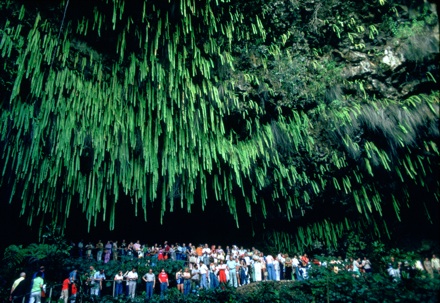
The photo above I found floating loose at the bottom of a box, one of the many orphans I have had to match to its roll. Once I found the Hawaii batch, I was able to easily recognize where it belonged. It shows the Fern Grotto in Wailua River State Park on Kauai — this is a large lava cave that ferns took over, growing on every surface. I’m not certain if Hugh had pulled this from the rest of the roll for a presentation, or because he felt it wasn’t up to par. (His “rejects” usually look pretty great to me).
In the late 70s and early 80s, Hugh took numerous photos of hang gliding, mostly at Grandfather (the home of the National Hang Gliding Championship for a few years). The comments we received on a previous post tell the exciting story behind one of the hang gliding photos from Hawaii, which shows Morton himself taking flight! The image above was one that was able to capture the beautiful waters, and the contrast between the white sands and dark coral reefs.
Maybe it’s the temps in the 20s forecast for Chapel Hill, or the thought of a Mai Tai, but Hawaii is definitely calling for me to visit again soon. Right, Elizabeth?
Editorial Note from Elizabeth: I thought it was pretty funny when Amber said she wanted to write this post, because I am actually off to Hawaii myself next week! I’ll be doing, um, highly serious and intensive Morton-related research. No relaxing whatsoever. (Do you think the IRS will buy that?)



